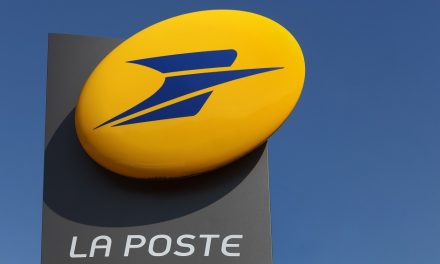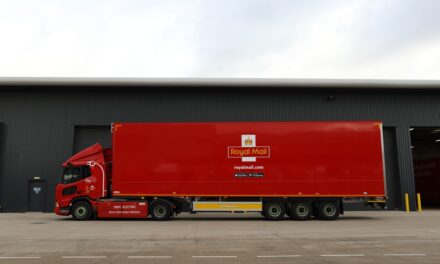
Consignia fleet deal leads outsource trend
Consignia, the rebranded UK post office, is following in the
footsteps of French cousin La Poste in outsourcing its
40,000-vehicle fleet serving the Royal Mail and Parcelforce. It is likely that other UK large vehicle fleet operators will follow
suit and decouple their non-core transport operations as haulage
costs look set to rise. The Consignia move follows on a previous announcement that the group
is undertaking a 'total review' of its delivery network as its
letter post monopoly is slowly dismantled and opened up to the
private sector. The Consignia transport network includes 180 service depots and
1,700 maintenance staff. Drivers not included in the outsourcing
will remain employed by the group. Consignia is reluctant to quantify potential savings on the current
Pounds 400m (Dollars 578m) in-house fleet procurement, management
and maintenance operation. However, the French post office announced in January that its larger
fleet of 60,000 vehicles would achieve estimated annual savings of
around 35%. 'The outsourcing of fleet financing will enable the group to improve
its liquidity, freeing up cash which can then be reinvested in its
core business,' said La Poste. With 27,000 maintenance invoices per year and over 7,000 maintenance
suppliers, the La Poste operations typifies the asset-heavy nature
of transport. Gerry Smith, Consignia's managing director services group, said that
the deal would achieve 'significant cost savings'. Consignia would consider an outright fleet sell-off, but prefers a
joint-venture fleet management company seeing Consignia in the
driving seat with 51% control. The Consignia fleet is split between 30,000 light commercial vans,
and up to 8,000 trucks, with the remainder being cars. Said Mr Smith: 'We recognise that the environment is changing, with
increased competition. The internal market is shrinking and we need
to bring in some cost variability.' In other words, Consignia can no
longer afford to keep a fixed sized vehicle fleet at a time when
demand could go up or down. The group already leases 35% of its
fleet, with the share expected to rise. Its new partner will also be able to push third-party vehicles
through those maintenance depots, giving a lower unit cost. Consignia is one of a growing number of giant UK road fleet
operators to go down the outsource road. Lex Transfleet, a UK specialist in managing trucks, drivers and
maintenance for other big transport users, expects the outsource
trend to gather pace. Assets are a dirty word in the logistics business, but professional
fleet management companies make their margin by leveraging truck
buying power through imaginative finance packages. They also have clear idea of residual value, what the vehicle is
worth at the end of its lease with the lead transport company. Michael Nuttall, contract hire director with Lex Transfleet, points
out that even the British Ministry of Defence is an outsourcer. 'We manage some 3,000 commercial vehicles for the MoD. We call it
the white fleet, the vehicles that haven't been painted green and
don't have guns attached.' He added: 'A number of major
organisations now recognise that they don't have the skills to
manage a large, diverse fleet of assets that are often
multi-locational.' Mr Nuttall said that fleet operators with upwards
of 200 vehicles are now looking to outsource. Lex manages 20,000 commercial vehicles but expects that figure to be
28,000 by year end. A primary concern for many UK companies with non-core vehicle fleets
is the fast-approaching working time directive that will mean fewer
hours behind the wheel for truck drivers. Said Mr Nuttall: 'The working time directive will mean an increase
in the number of people employed to achieve the same result in terms
of good delivered. 'Even if people increase the number of drivers, operators will still
not have the right assets in the right place at the right time. 'Operators will have to increase their fleet assets to make the same
number of deliveries.' Lex Transfleet estimates that a transport
operation with an average mix of day and night fleet moves will need
7% more labour and 3% more assets. 'We believe that such considerations will act as a spur for
operators to review their arrangements. 'They will ask themselves whether they need to have the transport
operation managed inhouse or externally.' John Harvey, chairman of
Tibbett & Britten, the UK's second largest logistics operator, has
reached the same conclusion. 'In the end society is going to have to meet the bill. The working
time directive will cause physical restructuring, and people will
have to pay more.' Mr Harvey added: 'Look at what happened in France
with the introduction of the 35-hour week, and what the retailers
said to the transport industry. 'The government has given us a 35-hour week which means more cost,
but unfortunately it has not told the housewife at the checkout that
she has to pay extra. 'The retailer said I am not going to pay you any more money. The
subcontractors were going bust.' Will the same scenario be repeated
in the UK? The T&B boss thinks not. 'We could go through that pantomime in this country, but I don't
think that we will. The UK industry is better structured and we are
more realistic.'
Copyright 2001 Lloyds List.
Source: World Reporter (Trade Mark) – FT McCarthy.
LLOYDS LIST, 10th September 2001











![Citizens Advice: We continue to see millions of people chasing lost parcels [and] having their accessibility needs ignored](https://postandparcel.info/wp-content/uploads/2020/12/parcels-440x264.jpg)
